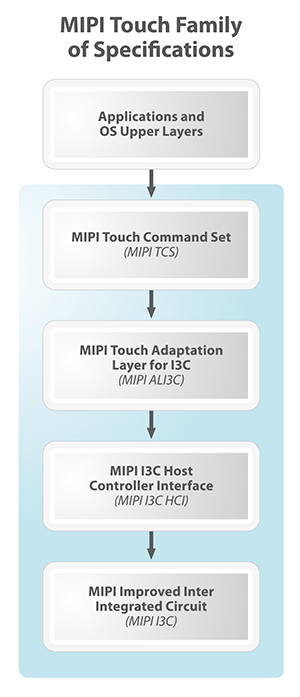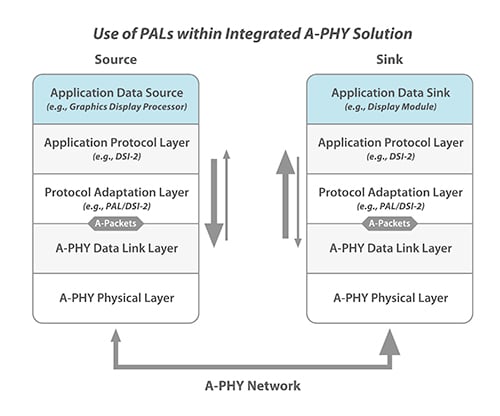MIPI Touch
Display and Touch
-1.png?width=1800&height=900&name=Banner%20Images%20-%20MIPI%20(11)-1.png)
Developed by: Display Working Group
A family of four specifications that standardize touch integration in mobile designs
Quick Facts
-
Advantages
- Systems-level solution simplifies software and hardware design
- Write-once approach allows writing a single device driver that works across operating systems
- Reduces development costs for application processor companies and touch sensor manufacturers
- Allows system developers opportunities to source components from multiple suppliers
-
Fundamental Features
- Publicly available specification to facilitate adoption and use
- Standardized command interface for touch systems
- Family of specifications yields the highest throughput and lowest latency for touch products
- Relatively easy to implement on designs that use MIPI I3C
-
Use Cases
- Devices that use touch via a display
- Touch, sensor and software integration
- Connecting an application processor to a touch sensor
- Improving touch system performance
-
Physical Layer
MIPI I3C over CMOS I/O
Get the Specification
-
Current Version
MIPI TCS℠ v1.0 (April 2018) Member version

MIPI ALI3C℠ v1.0 (April 2018) Member version
MIPI I3C HCI v1.0 (April 2018) Member version
MIPI I3C v1.0 (December 2016) Member version
MIPI Touch (April 2018) Public version

Overview
General Info
-
Overview
MIPI TouchSM is a family of four publicly available specifications that work together, as a system, to enable faster, more flexible design and implementation of touch applications in devices that use a display as the primary user interface. The specifications optimize the integration and performance of touch technologies in smartphones, tablets, laptops, computers, automotive systems and many other applications.
MIPI Touch is ideal for new designs that use the MIPI I3CSM sensor interface. The family of specifications includes:
- The MIPI Touch Command Set (MIPI TCS), a set of high-level commands that harmonize the writing of device drivers across operating systems.
- The MIPI Touch Adaptation Layer for I3C (MIPI ALI3C), which translates the touch commands for use on the MIPI I3C protocol.
- The MIPI I3C Host Controller Interface (MIPI I3C HCI), an optional specification for advanced systems that makes it possible to use touch commands and multiple data streams to add differentiating touch features to a design. Application processor companies can apply the specification to standardize the HCI method used in their devices.
- The MIPI I3C v1.0 specification, which connects an application processor to a touch sensor.
Membership in MIPI Alliance is not needed to access the specifications, but companies are encouraged to join MIPI Alliance to realize the many benefits membership provides. For membership information, visit Join MIPI.
-
Capabilities
Developers expected to use MIPI Touch include application processor companies and those that design or integrate touch sensors, among others.
MIPI Touch provides significant interoperability conveniences that alleviate previous challenges associated with touch, sensor and software integration the broad and diverse device market. A primary benefit is a standardized write “write once” approach that enables a developer to write a single driver that can be used across operating systems for touch implementations in a wide range of devices. MIPI Touch also provides significant performance benefits: When all four specifications are used as a solution, it yields the highest throughput and lowest latency for touch products.
-
Diagrams & Tables
Industries









